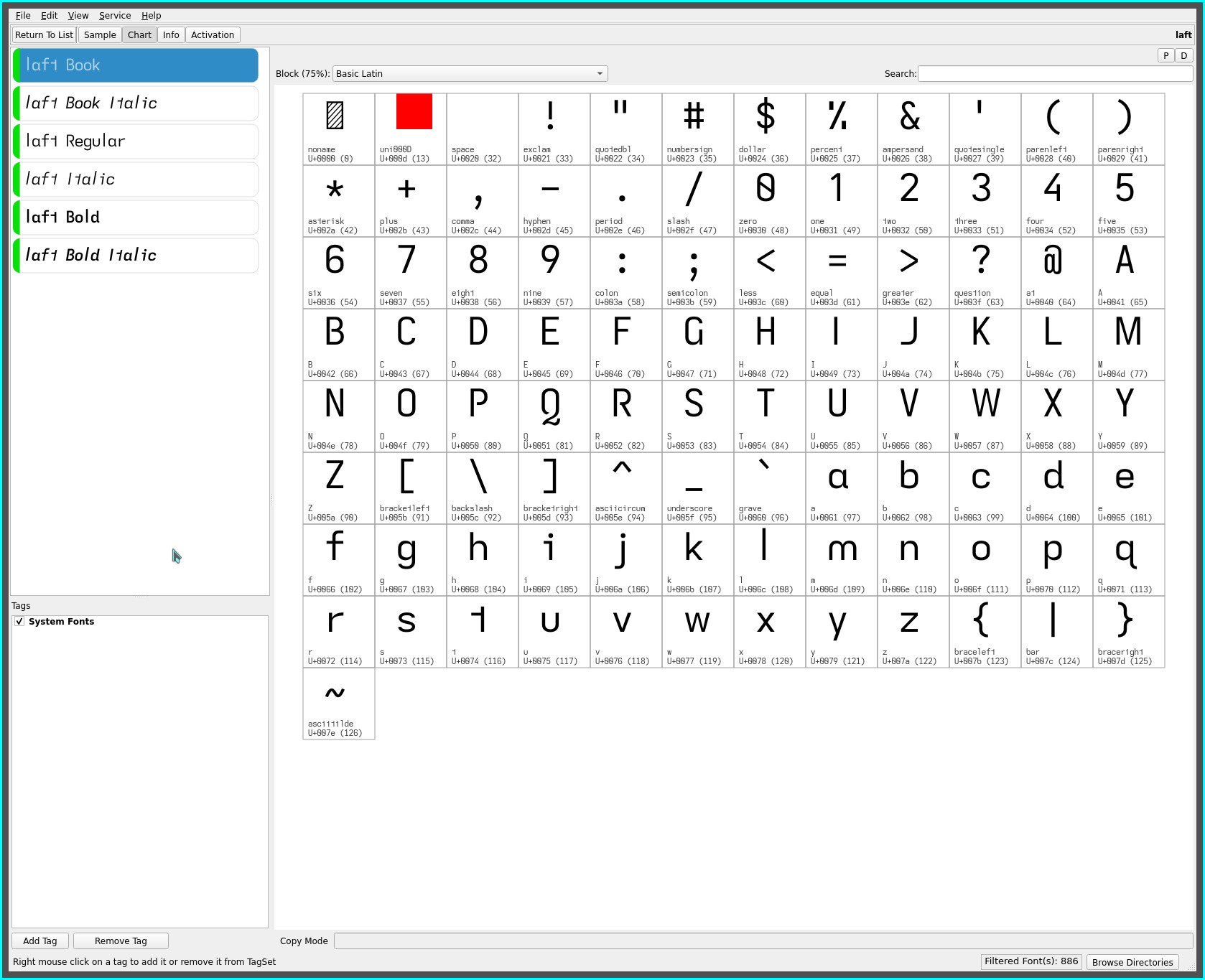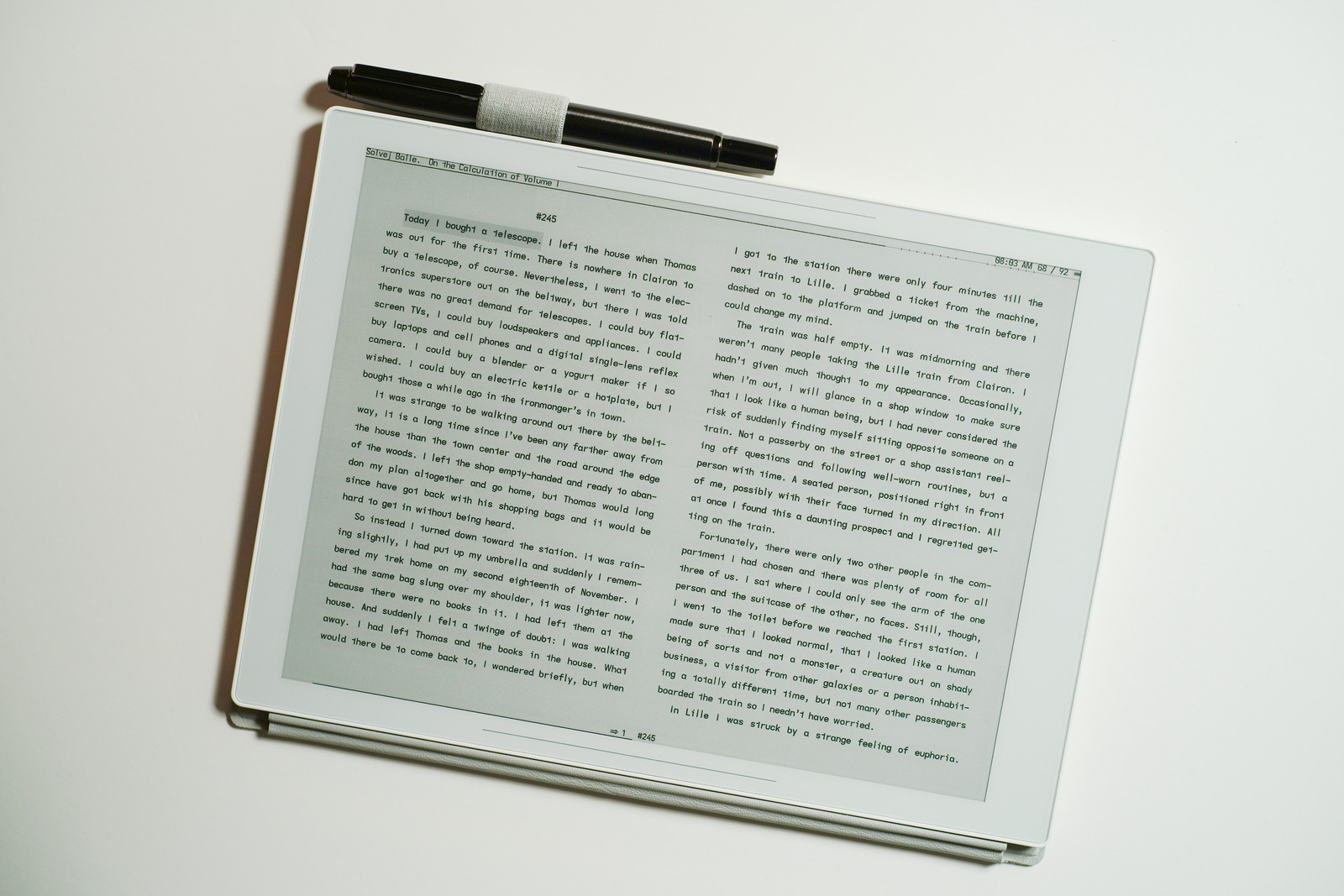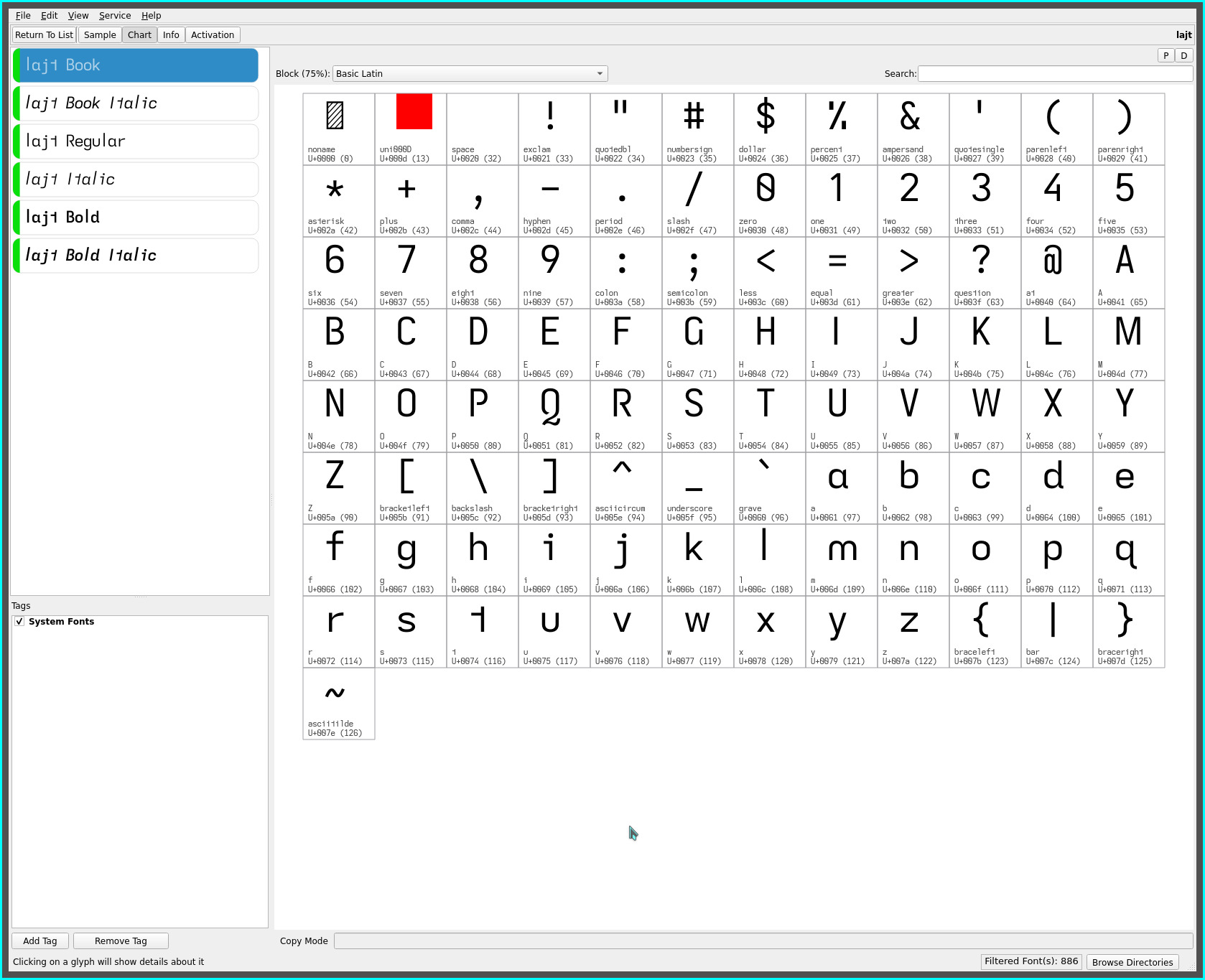laft font
just as the luft font had established itself as my favourite ereading font, version 33.x of the Iosevka font introduced an angled “top-cut” single storey lower case a in three glyph variants—serifless, serifed and tailed, leading into its introduction with the laft font.
The angled top-cut glyph is significantly more distinguishable than the standard serifless single storey a, at least to these eyes—due, i suspect, to the asymmetry of the glyph’s vertical bar—with its more distinct angled outline (perceptible even at small font sizes) contrasting what would otherwise be two competing symmetrical glyph shapes with the o character.
The “tailed” flair adds further distinction from the o glyph, as well as, offering a pleasant visual “flow” characteristic to the font—most noticeable with the grammatic article “a”.
from lift & luft
while past fonts have previously leaned dominantly towards serifless glyph shapes, the laft font relaxes this constraint with the judicious use of serifs, tails and turns—reintroducing common monospaced source code (and past font) glyph shapes (while still adhering to non-mirrored glyph shapes for improved dyslexic readability). In particular..
- the tailed lower case d—similarly replicating the visual flow of the single storey a
- the toothless corner lower case b—departing from the toothless rounded glyph towards the more common toothed outline (sans corner)
- the eared serifless lower case p—a return to its classic shape (all while still preserving non-mirrored b d p q outlines)
- the straight-turn lower case y—enhancing the “flow” characteristic of laft with added visual distinctiveness from the v..

The distinctive glyph set of the lift, luft and laft fonts (from common font designs)..
| letter | lift font | luft font | laft font |
|---|---|---|---|
| B P R | open | open | open |
| G | toothed-hookless | toothed-hookless | toothed-hookless |
| Q | open-swash | open-swash | open-swash |
| I (eye) | serifed | serifless | serifless |
| J | hook | flat-hook | flat-hook |
| a | double-storey toothless-corner |
double-storey toothless-corner |
single-storey top-cut-tailed |
| b | toothless-rounded | toothless-rounded | toothless-corner |
| d | toothed | toothed | tailed |
| f | extended | extended | extended |
| l (el) | extended | extended | extended |
| m | earless-rounded | earless-rounded | earless-rounded |
| p | earless-corner | earless-corner | eared |
| q | hook-tailed | hook-tailed | hook-tailed |
| t | asymmetric (reversed) | asymmetric (reversed) | asymmetric (reversed) |
| u | toothless-rounded | toothless-rounded | toothless-rounded |
| y | straight | straight | straight-turn |
readability

On 300 PPI eink screens, even at small font sizes, this top-cut font is highly legible—much more so than previous font sets with the serifless single storey a. The double storey luft and lift fonts still remain more legible but the added air the single storey a imparts to the page—with its third most common letter frequency and with the frequent “ea” bigram—is a refreshing reading alternative.
| typeface | rank | readability aid | readability penalty | visual air |
|---|---|---|---|---|
| lift | 1 | double-storey a, serifed I (eye) |
||
| luft | 2 | double-storey a | serifless I (eye) | |
| laft | 3 | straight-turn y | single-storey a, serifless I (eye) |
increased |
My current KOReader layout setup displaces the luft font with the new laft font for its decreased visual page density (increased air) as my default font—the luxury of good visual acuity (knock on wood!). As always, YMMV :-)
lajt font
the serifed lower case j is a highly readable glyph shape, almost ubiquitous with source code fonts. And was a serious consideration for the laft font. Instead, it provides an alternate flavour..

of the laft font with..
- the serifed flat-hook lower case j (the serif punctuating the floating “dot”).
- the serifless hook capital J (to complement the change up)
- the serifed capital I (for dyslexic contrast to the extended lower case l (el))
The serifed flat-hook j more distinctly fills its character cell, the serif adding legibility to the glyph. However, this is counter to the “air” emphasis of the laft font (low as the j’s frequency of use is), hence, the creation of this alternate font—for those times i wish to revisit the application of this glyph :-)
repos
This font may be found on OneDrive.